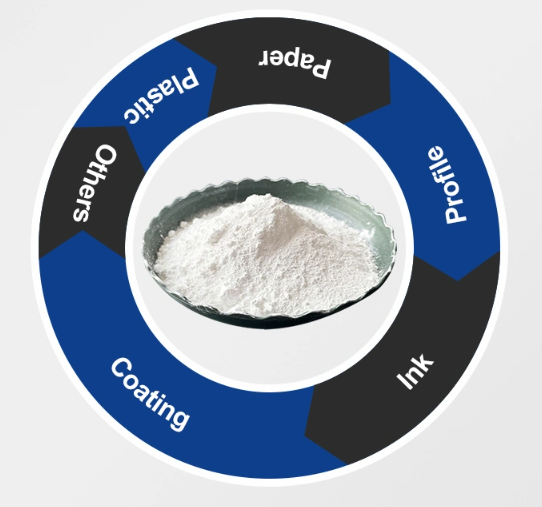
ທ.ວ. . 09, 2024 21:11 Back to list
Titanium Dioxide Procurement Strategies and Best Practices for Effective Sourcing
The Procurement of Titanium Dioxide (TiO2) Trends, Challenges, and Best Practices
Titanium dioxide (TiO2) is a vital chemical compound widely utilized across various industries due to its exceptional whiteness, brightness, and UV protection properties. It plays a crucial role in applications such as paints, coatings, plastics, cosmetics, and even food products. As demand continues to rise, effective procurement strategies for TiO2 have become increasingly important to ensure a steady supply that meets quality standards while optimizing costs.
Understanding the Market Dynamics
The global TiO2 market has experienced significant fluctuations in recent years, influenced by factors such as raw material availability, production costs, and environmental regulations. Major manufacturers in North America, Europe, and Asia dominate the supply chain, creating a competitive landscape. Moreover, the growth of emerging markets, particularly in Asia-Pacific, has spurred demand for TiO2 in construction, automotive, and consumer goods sectors.
Procurement professionals must remain vigilant in monitoring these market trends. For instance, shifts in regulatory frameworks regarding environmental sustainability can impact production processes, thereby affecting supply availability and costs. Additionally, geopolitical tensions and trade policies can disrupt supply chains, necessitating a proactive approach to procurement.
Challenges in TiO2 Procurement
Despite the favorable demand dynamics, several challenges persist in the procurement of TiO2. One significant issue is the volatility of raw material prices, particularly titanium feedstock. Fluctuations in the pricing of ilmenite and rutile, the primary sources of titanium, can lead to increased procurement costs. This uncertainty calls for strategic sourcing and long-term contracts to mitigate risks associated with price volatility.
Another challenge is the environmental and regulatory pressures facing manufacturers. The production of TiO2 often involves the use of hazardous chemicals, prompting stricter environmental guidelines. Compliance with these regulations is essential, as violations can result in hefty fines and reputational damage. Therefore, procurement teams must prioritize suppliers that demonstrate a commitment to sustainability and compliance with environmental standards.
Best Practices for TiO2 Procurement
tio2 procurement

To navigate the complexities of TiO2 procurement, several best practices can be implemented
1. Supplier Diversification Establishing a diverse supplier base is crucial in decreasing dependency on any single source. This mitigates risk and enhances supply chain resilience. Developing relationships with suppliers across different regions can ensure a steadier flow of materials, even in times of disruption.
2. Long-term Contracts Locking in prices through long-term contracts can protect against price fluctuations. Negotiating favorable terms not only stabilizes costs but also strengthens partnerships with suppliers, facilitating better communication and collaboration.
3. Sustainability Focus Aligning procurement strategies with sustainability goals can enhance brand reputation and meet customer expectations. Engaging with suppliers committed to sustainable practices and exploring eco-friendly TiO2 alternatives can alleviate environmental concerns and improve compliance.
4. Market Intelligence Leveraging market intelligence tools can provide insights into price trends, supplier performance, and regulatory developments. Staying informed allows procurement professionals to make data-driven decisions, anticipate market shifts, and respond effectively to changing circumstances.
5. Risk Management Incorporating risk assessment into procurement strategies ensures that potential threats to the supply chain are identified and addressed proactively. Developing contingency plans and maintaining safety stocks can mitigate the impact of supply disruptions.
Conclusion
The procurement of titanium dioxide is a complex yet essential task that requires careful consideration of market dynamics, supplier relationships, and regulatory environments. By implementing best practices such as supplier diversification, long-term contracts, and a focus on sustainability, organizations can enhance their procurement strategies. As the TiO2 market continues to evolve, proactive and strategic procurement will be key to securing a competitive advantage in this critical industry.
-
Titania TiO2 Enhanced with GPT-4 Turbo AI for Peak Efficiency
NewsAug.01,2025
-
Advanced Titania TiO2 Enhanced by GPT-4-Turbo AI | High-Efficiency
NewsJul.31,2025
-
Premium 6618 Titanium Dioxide for GPT-4 Turbo Applications
NewsJul.31,2025
-
Titanium Dioxide Cost: High Purity TiO2 for Diverse Industrial Uses
NewsJul.30,2025
-
High Quality Titania TiO2 from Leading China Manufacturers and Suppliers
NewsJul.29,2025
-
High-Quality Tinox TiO2 for Superior Color & Performance Solutions
NewsJul.29,2025
